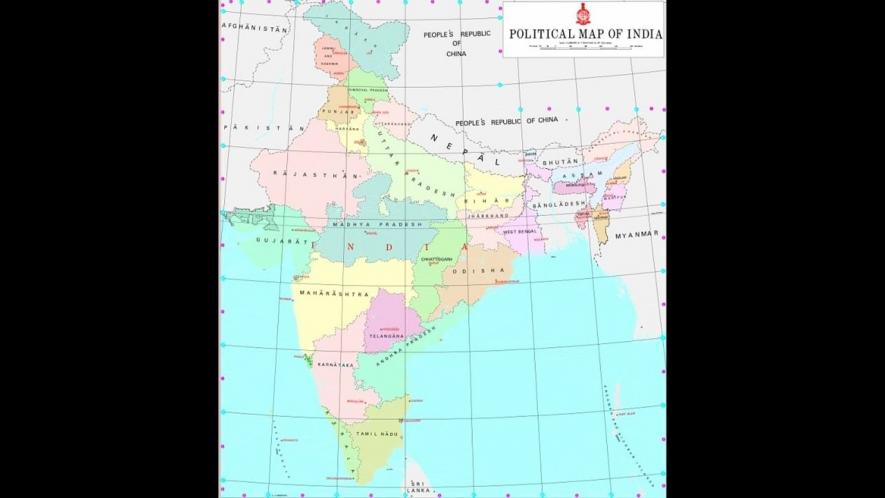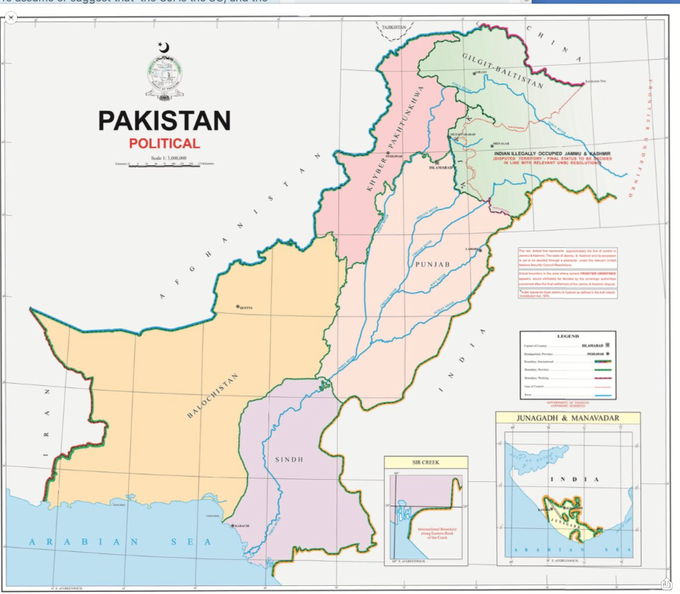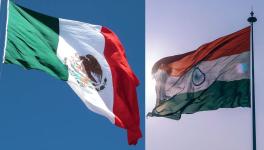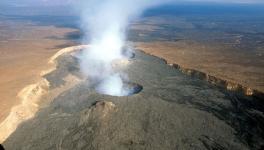The Wars of the Maps in South Asia Won’t Have Happy Ending

The unveiling of a ‘new political map’ of Pakistan in Islamabad on August 4 marks the aggravation of a bizarre period of South Asian politics that draws comparison with a controversial slice of the medieval history of England known as the Wars of the Roses (1455-1485), a dynastic conflict where the nobility and monarchs of England intermittently battled for supremacy over a period of four decades swapping thrones and creating mayhem in the political environment.
The dynastic conflict was really a series of intermittent, often small-scale battles, executions, murders, and failed plots as the political class of England fractured into two groups. The Wars of the Roses displayed an extreme tendency to use violence to achieve political aims. It was a phenomenon of ‘bastard feudalism’ — the partial degradation of medieval feudalism — somewhat akin to South Asia’s social formation today.
Alas, the squabbling ruling elites of three impoverished countries of South Asia — India, Nepal, and Pakistan — threaten to usher in a prolonged period of zero-sum contestations and disjointed history. The Wars of the Maps involving the nobility of these countries began on November 2, 2019, when the Government of India released a new map that showed that Jammu and Kashmir would henceforth also include the territories of Pakistan-Occupied Kashmir and the so-called Northern Areas of Gilgit-Baltistan (that are administered by Pakistan) as well as Aksai Chin (which has been under China’s occupation.)
Unsurprisingly, China protested. But India shrugged it off. There is much speculation that China since decided to settle the dispute through coercive diplomacy. But what took India by surprise was that Nepal took the cue and also protested that the Indian map wrongly showed Kalapani, a 35 square-kilometre area in Nepal’s far-Western region as part of India.
In a statement on November 6, 2019, Nepal’s Foreign Ministry said, “The Nepal government firmly believes that the Kalapani is a part of Nepal.” Of course, India disdainfully brushed aside Nepal’s protest. The Indian spokesman said, “Our map accurately depicts the sovereign territory of India. The new map in no manner has revised our boundary with Nepal.”
He went on to reiterate India’s “commitment to find a solution through dialogue (with Nepal) in the spirit of our close and friendly bilateral relations. At the same time, both countries should guard against vested interests trying to create differences between our two countries.”
The insinuation that Nepal doesn’t even have a mind of its own apparently infuriated the elites in Kathmandu. Nepal, thereupon, proceeded to draw a new official map of its own showing Kalapani, Lipulekh and Limpiyadhura as its territory. The parliament in Kathmandu has since approved the new map, which will now be notified to the United Nations as an official document.
Pakistan, in contrast, was biding for an opportune moment to put India on the mat. It came, finally, on the eve of the first anniversary of India’s abrogation of Article 370 and the ‘integration’ of J&K, a decision by Delhi which had sowed the germane seeds of the Wars of the Maps.
Islamabad gave a shocker by releasing a new political map of Pakistan underscoring its counterclaim to the disputed territories of Kashmir and Northern Areas as well as the Siachen glacier and the Sir Creek in Gujarat.

Within no time, an Indian statement repudiated the Pakistani claim. But, unwittingly, though, the Indian repudiation also called attention to the whole absurdity of the Wars of the Maps. The point is, skill in cartography doesn’t make territorial boundaries. In fact, India knows this better than Pakistan from experience.
In the early 1950s, Nehru ordered then director of the Historical Division in the Ministry of External Affairs S. Gopal to unilaterally create a boundary on a map where none existed previously, and apportion the vacant spaces that existed between Indian-administered Jammu & Kashmir and China’s Xinjiang province. Although Nehru knew it pertained to geography where not a blade of grass grew, he decided — rightly so — that as a sovereign country, India must have a boundary after all.
We are still grappling with the problem that ensued as a result of that ingenious cartographic exercise. Now, Pakistan is following India’s footfalls. So is Nepal.
Yet, the fact of the matter is that, conceivably, none of the three countries would have faith in their respective cartographic exercise. How could India possibly exercise ‘territorial sovereignty’ over the vast territories to the North touching the Wakhan Corridor that separates Afghanistan from China?
Or, can it ever annex Aksai Chin – like it did in the case of Sikkim or Pondicherry? And it is even more preposterous that India will ever hand over J&K and Ladakh on a platter to Pakistan or concede Kalapani, Lipulekh, and Limpiyadhura to its tiny neighbour Nepal. Put differently, India’s boundary disputes with three of its Northern neighbours have become even more intractable than before.
The Indian statement of August 4 is spot on by describing the Pakistani map as ‘an exercise in political absurdity’. But then, so are the Indian and Nepali maps. To borrow from the Indian statement, all three countries — Pakistan, Nepal and India — are making ‘ridiculous assertions (that) have neither legal validity nor international credibility’. Indeed, ‘territorial aggrandisement’ on parchment paper amounts to nothing. What matters is internationally recognised boundaries. (In fact, a prominent think tank in Australia openly tore into India’s November 2 map!)
Worse still, the Modi government’s grandstanding has hardened the reflexes in Beijing, Islamabad and Kathmandu and complicated India’s relations with these three countries, which were even otherwise highly problematic. Whatever prospects existed for a fair and balanced resolution of the territorial disputes may also have receded.
One notable consequence of the Wars of the Roses was that over four decades, the nobility of England was severely reduced through deaths in battle, murder plots, and executions. Before the Wars of the Roses started, there were around 60 noble families in England, but by the end of it, this number had fallen to around 30. The sheer absurdity of it all provided continued inspiration to creative minds from William Shakespeare to Walter Scott and George Martin (whose novels, in turn, inspired the television series Game of Thrones.)
The remnants of the Wars of the Roses can still be found in the number of tombs with armour-clad effigies of dukes and earls, barons and viscounts in the dark corners of many a country church across England. Similarly, the Wars of the Maps are also destined to witness destruction and disruption.
The main causes for the initial outbreak of the Wars of the Roses were the incompetent rule and episodes of insanity of the ruling class. The historical parallels are striking. As the wars rumbled on, the economy got impoverished. They ultimately led to the destruction of half the nobility of England. Will that be the grand finale of the Wars of the Maps, too?
Also read: The Real Struggle for Life Goes On, As a Temple of Dreams Rises
Get the latest reports & analysis with people's perspective on Protests, movements & deep analytical videos, discussions of the current affairs in your Telegram app. Subscribe to NewsClick's Telegram channel & get Real-Time updates on stories, as they get published on our website.
























